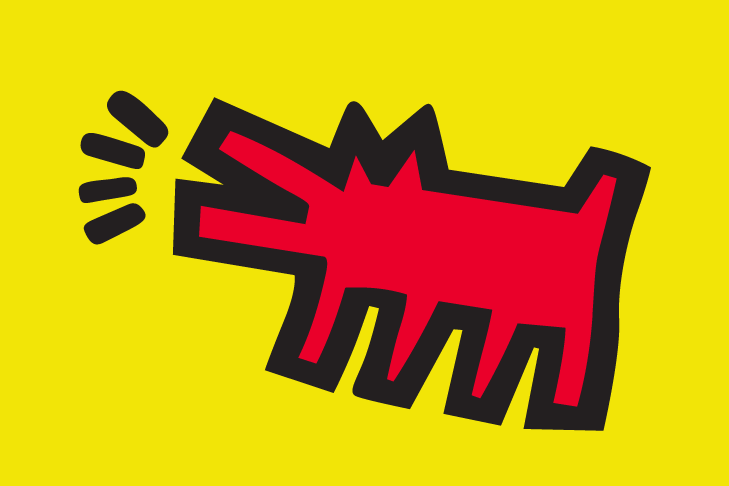The Rich History of Keith Haring’s Dogs

Keith Haring is a famous artist whose work has spanned decades and genres. His vibrant, bold, and often humorous artwork, primarily attributed to the graffiti subculture in New York City during the 1980s, is still highly acclaimed today.
Though Haring depicted numerous subjects and topics through his artwork, his iconic dog art is exceptional. Dog owners and pet lovers of all kinds can appreciate the eye-catching, abstract style found in Haring’s dog art. The traditional Keith Haring art style provides a unique and intimate look into the life of this legendary artist, another factor contributing to the special place this art holds in the hearts of many dog owners.
But what is the history behind Keith Haring’s dog art and the story behind his love for dogs? This article will explore the rich details of Keith Haring’s unique dog art and dive into the history of this game-changing artist.
The History of Keith Haring and His Dog Art
Haring began his career as a graffiti artist in the 1980s in New York City. Haring studied at the School of Visual Arts (SVA), where he experimented with various art mediums and techniques while exploring the burgeoning art community in the city.
During this time, he first began to incorporate dogs into his artwork. One of the most recognizable elements in Haring’s portfolio is his dog art, specifically the iconic barking dog symbol, emerging in a series of subway drawings Haring created between 1980-1985. His dog art soon became a symbol of his work.
After his first solo exhibition in 1981, Haring went on to have a highly-acclaimed one-man exhibition in 1982 and participated in numerous international exhibitions. In 1986, he opened the Pop Shop, a retail store where Haring sold various items with his images to reach as many people as possible with his art by making it accessible to everyone.
Haring’s work typically held more profound social messages, which is undoubtedly true for his iconic barking dog. Between 1982 and 1989, Haring created over 50 public artworks. Before passing in 1990, Haring established the Keith Haring Foundation to continue expanding his work and reaching new audiences with his inspiring, empowering imagery.

What Does the Dog Represent to Haring?
Despite the traditional portrayal of dogs as a symbol of loyalty and obedience, Haring used his dog art as a symbol of oppression to encourage his audience to think critically about power abuses in daily American life. The dog figure, which evolved from mythical, animalistic creatures in his early art, represented humans and animals, with the intent to communicate the differences between human power and animal instinct.
By repurposing the traditional characteristics associated with dogs, Haring could use a universally-loved image to empower people. However, Haring didn’t shy away from expressing his love for dogs and animals in his work, either.
Haring’s barking dog is portrayed in various ways, with some dogs dancing in one artwork and DJing in another. Haring’s work captured two distinctly different tones and blended them perfectly to encourage viewers to accept life’s versatility while questioning power dynamics and abuses.
What is the Dog Inspired By?
Haring pulled from various inspirations in his artwork and attributed much of his style to what he called “modern hieroglyphics,’ designs that could be read by a broad audience. Some art lovers believe that the Keith Haring dog was initially inspired by Anubis, the Ancient Egyptian god of death and the afterlife, who took on the form of a dog.
However, Haring took inspiration from far more than the style of hieroglyphics and incorporated heavy social topics into his work. His 1985 Dog piece was created to symbolize the pain, suffering, and turmoil raging through the nation during the HIV/AIDS epidemic.
His work was a political critique that scrutinized the people in power who refused to address the epidemic. The dog is considered an influential figure in socio-political activism and queer life.
Did Keith Haring Have Pets?
While Keith Haring might not have been a pet owner himself, his iconic barking dog has resonated with dog lovers for decades. Haring’s art depicted the dog as a powerful symbol and created his iconic dog with love and passion that is still evident years later.
For example, Haring’s DJ Dog artwork from 1983 shows a playful, humorous side to the artist and his portrayal of dogs while still celebrating the culture surrounding Haring and the vibrant music scene in New York City. Haring’s versatility is evident in the symbol of his iconic barking dog, reflecting the artist’s own perspective on life, society, and culture.





